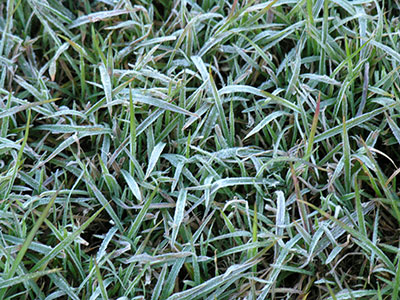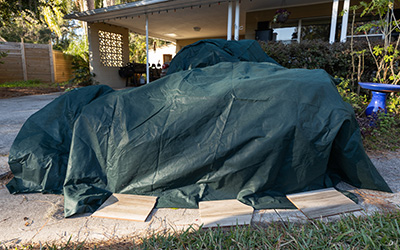Preparing the Landscape for Cold Weather

While it’s nothing compared to what our neighbors up north experience, Florida does get cold weather in the winter, and even freezes in some areas. Proper planning and care can make the difference between the life and death of landscape plants.
Before a Freeze
Be ready to move tender potted plants to warmer, sheltered areas if a freeze or frost is predicted in your area. Check your inventory of plant covers and frost blankets so that you’ll be prepared when the time comes.
Proper care throughout the year will give your plants an edge in cold weather. Plants tolerate cold temperatures better and recover from injury faster when they’re healthy.
Remember, don’t fertilize cold-sensitive plants in the late fall or winter. Fertilizer application will encourage new growth, which is especially susceptible to cold injury. Newly pruned plants are more susceptible to cold damage as well, so postpone pruning until spring. In North Florida, choose cold-hardy varieties or keep sensitive plants in containers that can be moved to a protected area.
Protecting Your Plants from the Cold

Winter temperatures in Florida are unpredictable; keep an eye on the weather so you can protect your plants. During a hard freeze, you can protect plants by covering them, but remember to drape the covers so that they completely touch the soil, so that ground heat can be trapped beneath. Consider adding an electric light bulb beneath the cover for additional heat. If your cold-sensitive plant is too large to cover completely, wrap the trunk with several layers of cloth or newspaper. Remove covers once the temperature rises above freezing.
Gardeners use many methods to protect plants from the cold, but some aren’t practical and could even be hazardous.
You’ve probably heard about using overhead irrigation during a freeze. Running irrigation like this works on farms where the irrigation systems are designed for this purpose. The water has to run continuously from before the freeze to several hours after temperatures rise for this method to protect plants. With home irrigation systems, you are simply wasting water. Additionally, the amount of water that home irrigation puts out can turn into the heavy ice, which can damage plants.
If—despite your efforts—your plants are damaged by cold, don’t be too hasty to prune away the damage; just wait for spring. Cold-injured plants will sprout below the damage so you can accurately assess exactly where to prune.
For more information on protecting plants during chilly weather in your area, contact your county Extension office.
Also on Gardening Solutions
- Cold Damage to Turf
- How to Help Your Lawn Survive the Chill
- Treating Cold-damaged Plants
- Your Florida Lawn in Winter
